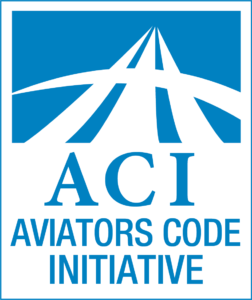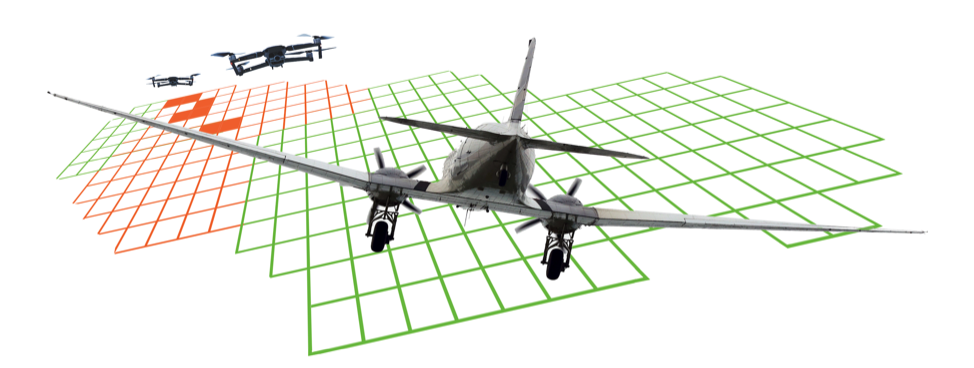In recognition of the increasing risk of operating in shared airspace near airports, the Aviators Code Initiative has released a working paper titled Improving Cockpit Awareness of Unmanned Aircraft Systems Near Airports. The paper describes a method to provide pilots of manned aircraft with enhanced awareness of nearby sUAS in certain kinds of airspace.
The method would communicate operational information regarding Low Altitude Authorization and Notification Capability (LAANC) to manned pilots operating nearby. Such airspace is designated within UAS Facility Map (UASFM) segments that specify maximum altitudes authorized for certain sUAS operations without further coordination with the controlling facility. This information can be crucial to flight safety. This proposal serves as a non-exclusive, interim safety mitigation until the widespread deployment of effective sUAS traffic detection and avoidance technologies. The method may also apply in the future to other airspace proximate to airports.
Small unmanned aircraft systems challenge manned aircraft pilots in terms of see and avoid. Small UAS cannot be detected by manned aircraft systems without supplemental equipment that is not yet generally available or practical. Nonetheless, sUAS risks to manned aircraft tend to increase in proportion to their proximity to those aircraft, and are typically greatest at or near airports.
Among the benefits of the proposal:
- it requires no additional ground or airborne surveillance equipment
- supports all sUAS using LAANC
- exploits the widespread use of electronic flight bags, tablets, and fixed avionics displays in the cockpit
- and could be implemented quickly throughout the NAS.
Roger Whittier, President of the Cirrus Owners and Pilots Association (COPA) said,
“On behalf of COPA, I wholeheartedly endorse this proposal. It is precisely the kind of information we need in the cockpit. We believe it will enhance safety and we encourage its adoption,”
David St. George, Executive Director of the Society of Aviation and Flight Educators (SAFE) stated,
“This is a very powerful, useful and creative approach to separation.”
 The working paper builds upon the foundation of the Aviators Model Code of Conduct initiative, now known as the Aviators Code Initiative (ACI). Over the course of 17 years, the ACI has developed best practices for general aviation pilots, instructors and maintenance technicians, and more recently, unmanned aircraft pilots with its UAS Pilots Code.
The working paper builds upon the foundation of the Aviators Model Code of Conduct initiative, now known as the Aviators Code Initiative (ACI). Over the course of 17 years, the ACI has developed best practices for general aviation pilots, instructors and maintenance technicians, and more recently, unmanned aircraft pilots with its UAS Pilots Code.
Developed through a volunteer effort, each is available as a free public service along with supporting materials here.
Source: Press Release

